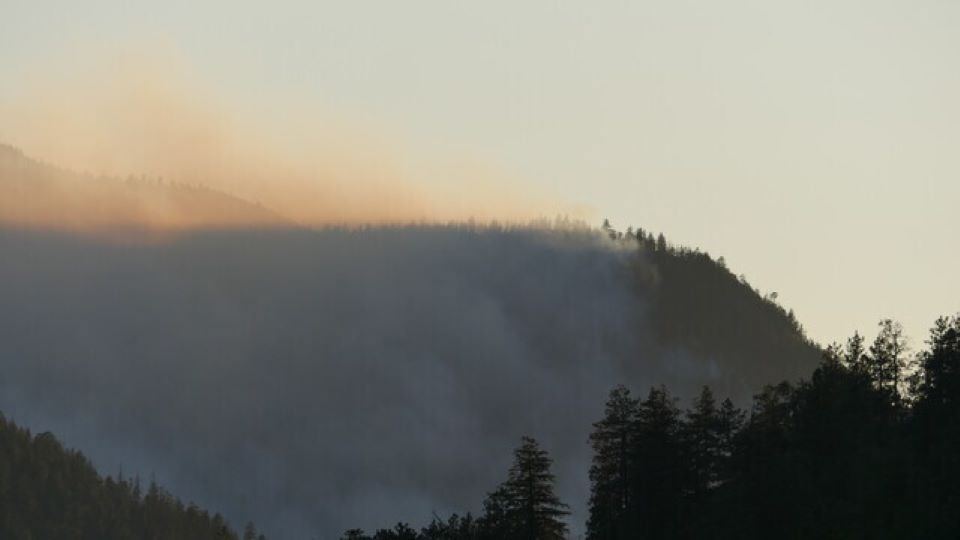The 2023 Canadian wildfire season is off to a roaring start. In Alberta, there have been more than 560 wildfires so far — , and the season has only just begun. Tens of thousands of residents have been evacuated and a was declared across the province.
Wildfires are not new to the region. The was the worst wildfire and most costly disaster in recent Canadian history. Meanwhile, on the opposite side of the country, , resulting in a local in Halifax Regional Municipality and more than 25,000 displaced residents.
As public health and disaster management scholars, our research focuses on how best to support the health of vulnerable populations in adverse situations, including through disasters, political challenges and geographic isolation. We have been devastated watching news coverage of the recent wildfires, including in one of our home provinces. However, we are not shocked.
With the impacts of climate change, wildfires in Canada will continue to intensify in strength and frequency. Enclosed shelter is paramount in reducing exposure to wildfire smoke. Yet, what happens to the on any given night who cannot easily evacuate or shelter indoors?
Impact on the unhoused
Research suggests that unhoused people are most vulnerable in disasters as and or alleviate their risks. In particular, studies show unhoused people’s disproportionate risks to health during due to limited access to appropriate shelter.
Many unhoused people have . These include substance use disorder, mental illness and chronic conditions. For people with a substance use disorder, there can be in communities vulnerable to disasters.
Even for unhoused people outside of evacuated communities, .
Despite these unique harms, unhoused people have that facilitate evacuation and post-disaster recovery. Both Alberta and Nova Scotia have relied on , yet many unhoused people do not have access to technology for emergency alerts and are not eligible for .
Evacuation centres are open to all, yet and can prevent access for the unhoused. Furthermore, research shows that authorities .
Planning for unique risks
As many Canadian provinces are currently experiencing, extreme heat and wildfires are increasing in frequency and intensity.
Loss of housing and infrastructure compounds an already fragile housing environment, especially for renters and . , aggravated by disasters, further reduces the likelihood that people living precariously will secure permanent housing, which would better protect them during future wildfire seasons.
Although cooling centres open during extreme heat, , particularly in the evening. Looking at other provinces, and are working towards ensuring unhoused people are supported during extreme heat and wildfire smoke. However it is unclear how unhoused populations are being helped during the current wildfires.
Our concern as researchers is that there is an alarming lack of international, national and provincial plans or guidelines that consider the unique risks and needs of unhoused populations during wildfires.
What is apparent is that response who support the unhoused, despite adequate housing being that should be the responsibility of the government.
Support during disasters
It is imperative for all levels of the Canadian government to consider how to best support unhoused people during disasters.
Looking at , promising practices include trauma-informed and addictions/mental health training for emergency responders and evacuation personnel, outreach services, (for example, flyers and handouts), providing inclusive low-barrier evacuation spaces, and .
Most importantly, any response must involve a co-ordinated partnership between community organizations, the government and those with the experience of being unhoused.
We need to better prepare for Canada’s wildfire season by including high risk and extremely marginalized populations, such as those who are unhoused, in emergency management plans and practices. Greater consideration of high-risk populations will ensure no one gets left behind.
![]()
Holly Mathias receives funding from the Social Sciences and Humanities Research Council (SSHRC) Vanier Canada Graduate Program and the University of Alberta. She is a member of the Canadian Students for Sensible Drug Policy - Edmonton Chapter.
Ashleigh Rushton receives funding from the Canadian Immunization Research Network (CIRN) and the Canadian Institutes of Health Research (CIHR).




